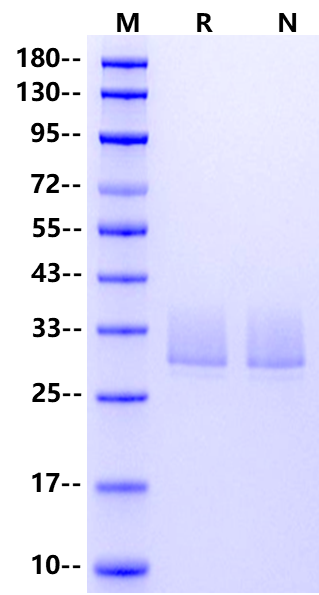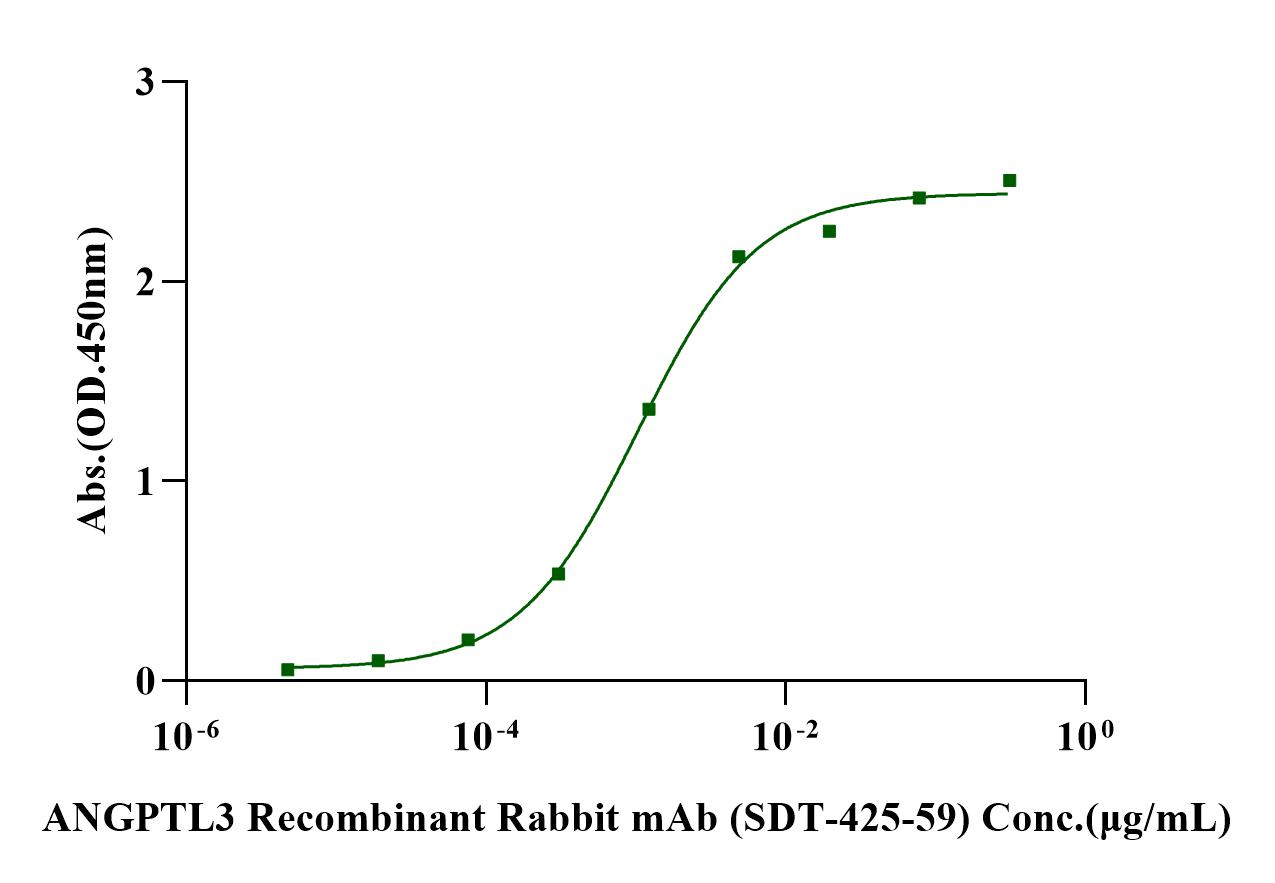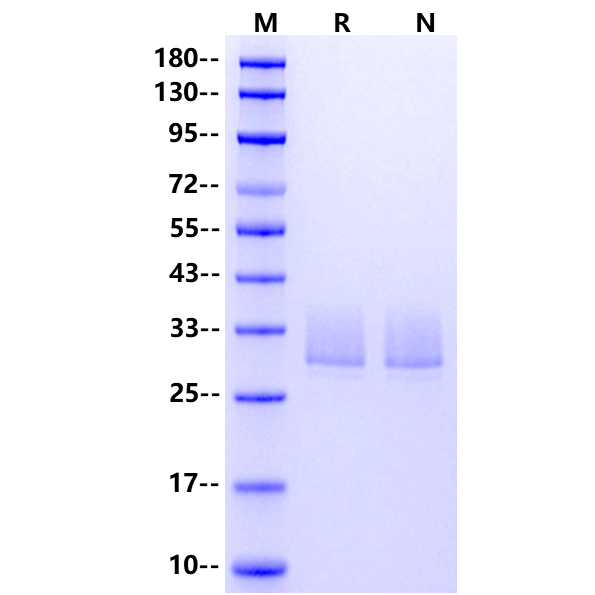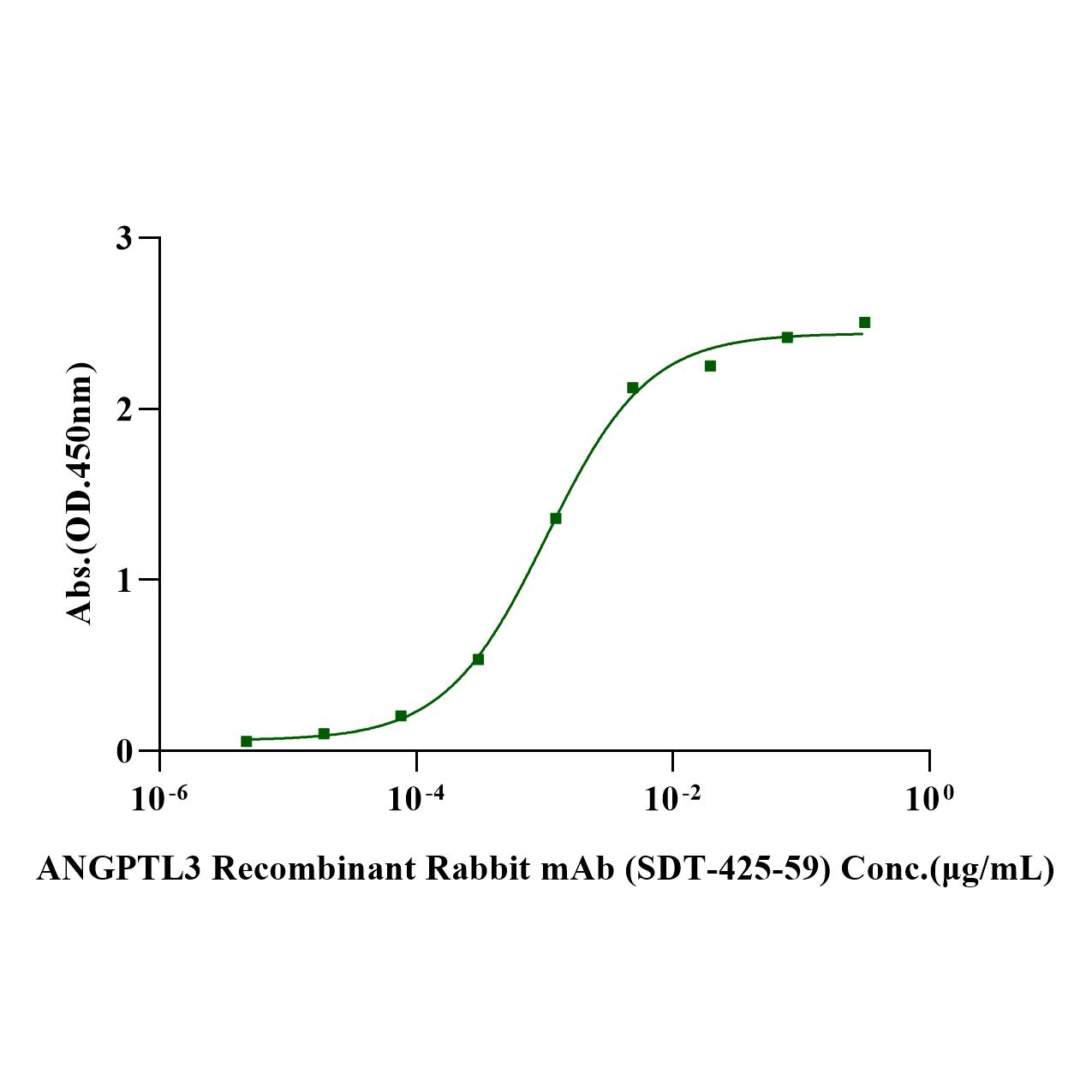Product Details
Product Details
Product Specification
| Species | Human |
| Accession | Q9Y5C1 |
| Amino Acid Sequence | Ser17-Pro220, with C-terminal 6*His SRIDQDNSSFDSLSPEPKSRFAMLDDVKILANGLLQLGHGLKDFVHKTKGQINDIFQKLNIFDQSFYDLSLQTSEIKEEEKELRRTTYKLQVKNEEVKNMSLELNSKLESLLEEKILLQQKVKYLEEQLTNLIQNQPETPEHPEVTSLKTFVEKQDNSIKDLLQTVEDQYKQLNQQHSQIKEIENQLRRTSIQEPTEISLSSKPHHHHHH |
| Expression System | HEK293 |
| Molecular Weight | 27-35kDa (Reducing) |
| Purity | >95% by SDS-PAGE |
| Endotoxin | <0.1EU/μg |
| Conjugation | Unconjugated |
| Tag | His Tag |
| Physical Appearance | Lyophilized Powder |
| Storage Buffer | PBS, pH7.4 |
| Reconstitution | Reconstitute at 0.1-1 mg/ml according to the size in ultrapure water after rapid centrifugation. |
| Stability & Storage |
· 12 months from date of receipt, lyophilized powder stored at -20 to -80℃. · 3 months, -20 to -80℃ under sterile conditions after reconstitution. · 1 week, 2 to 8℃ under sterile conditions after reconstitution. · Please avoid repeated freeze-thaw cycles. |
Background
Angiopoietin-like protein 3 (ANGPTL3) belongs to a multifunctional secreted protein that mainly expresses in the liver, and is regulated by numerous post-translational modifications, including multiple cleavage and glycosylation. ANGPTL3 has the characteristic structure of angiopoietins, consisting of a signal peptide, N-terminal coiled-coil domain and the C-terminal fibrinogen (FBN)-like domain. The N-terminal chain is important for lipid metabolism, while the C-terminal chain may be involved in angiogenesis. Accumulating evidences have revealed that ANGPTL3 plays a critical role in both biological processes, such as lipid metabolism, angiogenesis and haematopoietic function and pathological changes, including atherosclerosis, carcinogenesis, nephrotic syndrome, diabetes, liver diseases and so on. Thus, ANGPTL3 may serve as a potential biomarker in these diseases. Furthermore, ANGPTL3 signaling pathways including LXR/ANGPTL3, thyroid hormone/ANGPTL3, insulin/ANGPTL3 and leptin/ANGPTL3 are also involved in physiological and pathological processes. Some biological ANGPTL3 inhibitors, chemical drugs and traditional Chinese medicine exert beneficial effects by targeting ANGPTL3 directly or indirectly. Therefore, elucidating the effects and underlying mechanisms of ANGPTL3 is essential to develop promising strategies in the diagnosis and treatment of related diseases.
Picture
Picture
SDS-PAGE

ELISA

Immobilized ANGPTL3(17-220) His Tag Protein, Human (Cat. No. UA010112) at 2.0μg/mL (100μL/well) can bind ANGPTL3 Recombinant Rabbit mAb (SDT-425-59) (Cat. No. S0B3204) with EC50 of 0.82-1.13ng/ mL.




